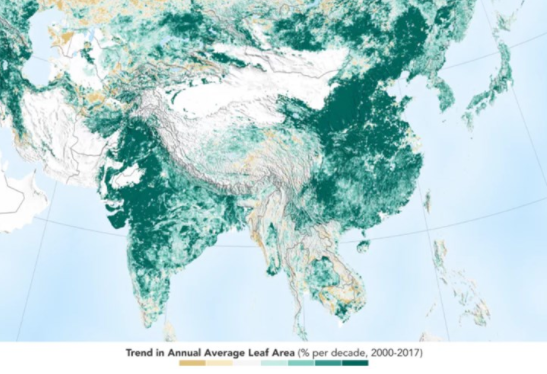
Observations show that the earth is greener than 20 years ago, and the results of the benchmarking are surprising.
2019-02-14
A recent study, Boston University researchers show that China alone accounts for 25% of the global increase in vegetation. The Earth is greener than it was 20 years ago. What is the basis for their observations? How is the target?
According to foreign media news, human activities on the planet usually have a negative impact on the environment. We are injecting plastic into the ocean and melting the ice sheet at an alarming rate. But this is not all bad news. A new study on satellite data shows that the planet has become more "green" in the past 20 years or so, with the largest contributors being China and India.
For this new study, Boston University researchers examined remote sensing data collected by NASA satellites between 2000 and 2017. Interestingly, the total amount of green areas on the Earth's land surface increased by about 5% during this period. This is about 5.5 million square kilometers (2.1 million square miles), equivalent to the new vegetation of the Amazon rainforest.
The researchers were surprised by the two leading countries, China and India. According to the study, China alone accounts for 25% of the global increase in vegetation.

Given that plants are a huge natural carbon sink, green earth can only be a good thing. This is theoretically correct, but in practice, different plants play different roles in the carbon cycle, so increased green may not necessarily slow climate change. New forests are good for carbon capture, but new farmland tends to release captured carbon back into the atmosphere during the harvest season.
The team said that 42% of China's new greening comes from forests and 32% is farmland. In India, 82% of the added green plants come from crops, while 4.4% come from new forests.

Of course, more farmland means more food production. Researchers say that since 2000, China, India's cereal, vegetable and fruit production has increased by 40%, mainly due to crop rotation, increased fertilizer use and irrigation improvements.
Another major surprise of the study was that human activity was the cause of a significant increase in new greening, and researchers believe that rising carbon dioxide concentrations will be the biggest contributor. These new findings suggest that human land use practices need to be included in future Earth system models.
